STUDENTS PROJECTS
PROJECTS2013
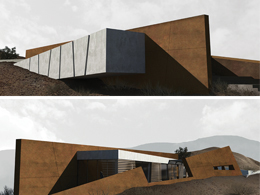
03 November, 2014
Archaeological museum in Astypalaia
The goal of the intervention is to create a landmark, worthy of findings, where, with respect to the natural and built environment, will coexist antiquities with modern activities of the island.
Student: Maria -Iliana Roidi
Supervisor : Costas Moraitis, Costas Caradimas
School of Architectural Engineering of the National Technical University of Athens
Date : February 2014
The "chora" of Astypalea is built on a hill and the traditional settlement bears strongly characteristics of the Cycladic civilization. In the neck of the hill the eight conserved windmills form the dividing line between the historic and the modern settlement and on the top of the hill stands the venetian castle. On the island are scattered, throughout its extent, archaeological discoveries that cover a variety of prehistoric / Mycenaean until the Middle Ages.
The most important monument, is the infant cemetery discovered accidentally in 1995 in the area of the "Cylindra" on the frontier of "Chora". In a test section, thirty pots, which contained bones, were discovered. The excavations continued and revealed a large set of infant burials, which were deposited in earthen vessels, ancient burial method. With this unexpected finding has emerged a unique in the world set of infant skeletons which is offered to many kinds of interdisciplinary studies: archaeological, demographic, sociological, but essentially anthropological. So far, there have been found about 3,500 vessels and this number will increase significantly under the conjecture of archaeologists.
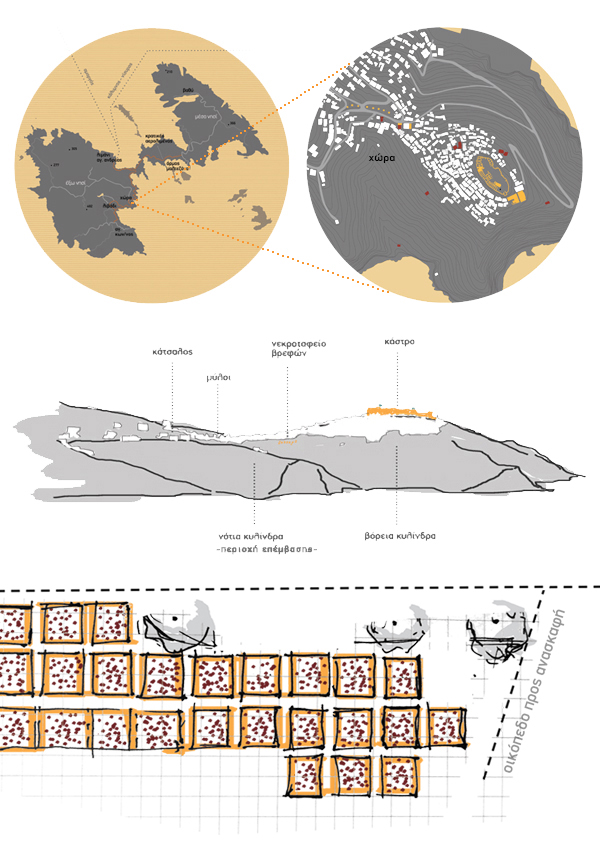
The hall of the existing museum is not sufficient to cover the needs of all the findings, which are preserved -or not-, in warehouses and in the old school of chora to adverse storage conditions. According to these facts is perceived the urgent need to create a museum where will be exhibited all the findings of the island, covering the needs for safe storage of material and also will gather activities like interdisciplinary conferences and Astypalea's festival (maxoulia).
For the new museum is selected the site of an abandoned slaughterhouse, in south Cylindra. The area of intervention, due to the optical fygon and the prominence position, offers the possibility to the new archaeological museum to be a junction of dipoles old / modern, artificial / natural and combined with the easy accessibility to play the role of a landmark where will coexist antiquities with modern activities of the island.
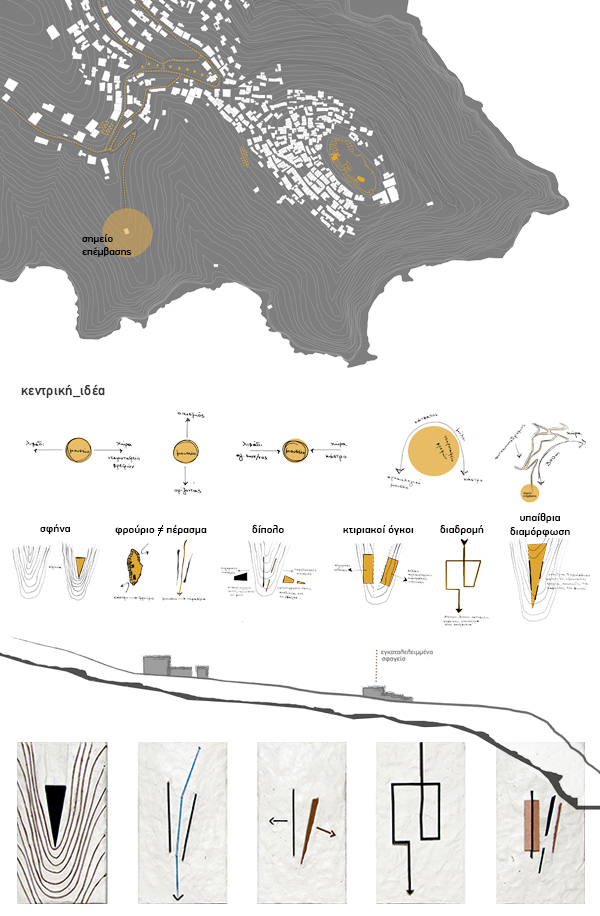
The initial concept was shaped by the geomorphology of the slope and the intention of integrating the building volume to the natural environment while maintaining the characteristics of an artificial element that differs from the natural. Therefore results the idea of the wedge.
Meanwhile, the visual contact with Chora made inevitable the comparison of the intervention with the castle and the traditional settlement. My intention was to make a metaphor of the castle on the scale of a small museum, which will not operate as a fortress but as a passage that connects the settlement with the horizon.
The idea of the passage is expressed with two walls. The wall that is facing Chora follows the curves of the ground and emerges from it, symbolizing the ruin, the excavation. The wall that is facing the modern settlement is vertical and intersects the curves of the ground. In this way is emphasized the dipole ancient / modern and museum acquires a dual substance.
The building volumes of the exhibitions are attached on the walls. The archaeological exhibition is under the ground surface, implied the process of excavation, while the modern exhibition, attached to the vertical wall, is on the surface. Between the walls are placed the remaining functions of the museum at different levels in order to connect the modern with the archaeological exhibition space.
The landscape formulation closes the wedge shape that is implied by the walls and follows the slope forming the levels of the amphitheater.
The drawings, in scale 1: 500, shows, completely schematically, the intention of intergrating the general form of the building to the lines of the slope. The main volume of the museum is developed under the ground surface, while the visible volume is comparable to the building scale of the traditional settlement. On the facades, the "ruined" wall, facing Chora, follows the incline of the ridge, while the contemporary wall makes its presence sharp.
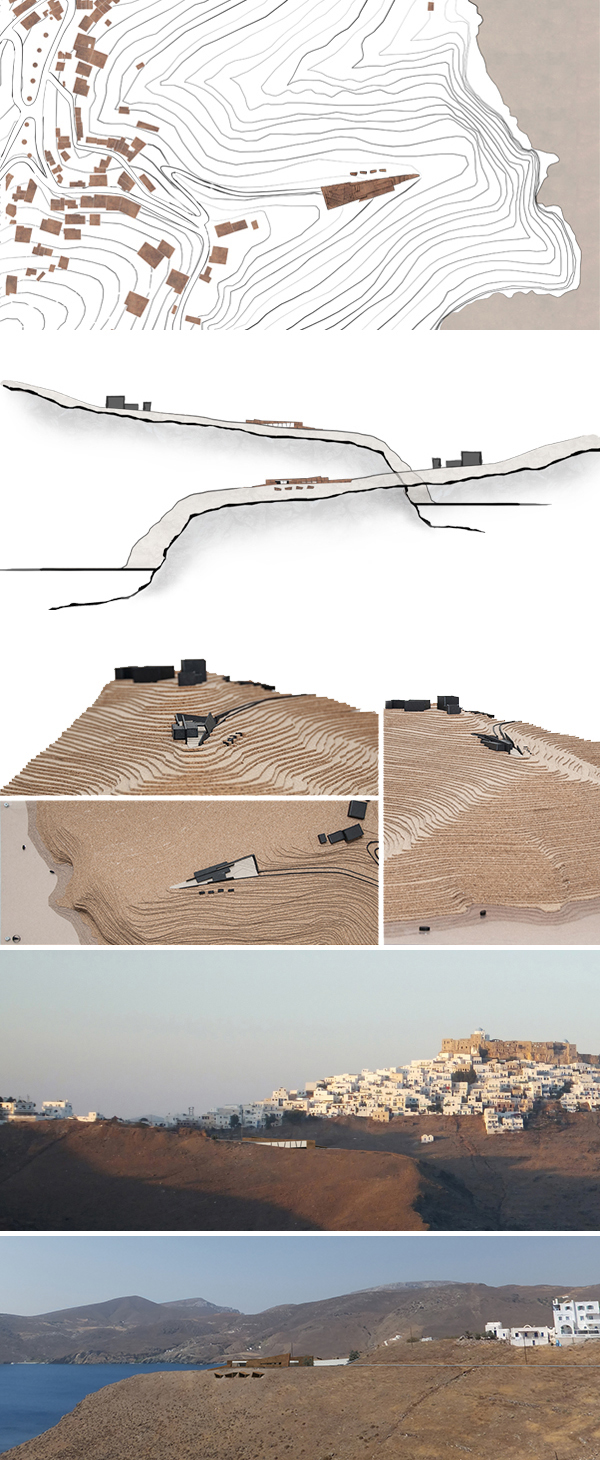
The new archeological museum includes exhibition and storage space for the archaeological findings, space for temporary exhibitions, multi-purpose hall, which will be exploited also during the winter months by locals and researchers, an outdoor amphitheater for presentations and maxoulia festival hosting, backstage , bar/cafe, shop, info point / ticket office, plus ancillary areas and warehouses.
Touring the exhibitions of the museum begins with a sharp descent into the interior of the slope, which indicates a transfer in the past, to encounter the archaeological exhibition and gradually as the exhibits and museum functions approaches the "present" to retrieve to the surface and the natural light.
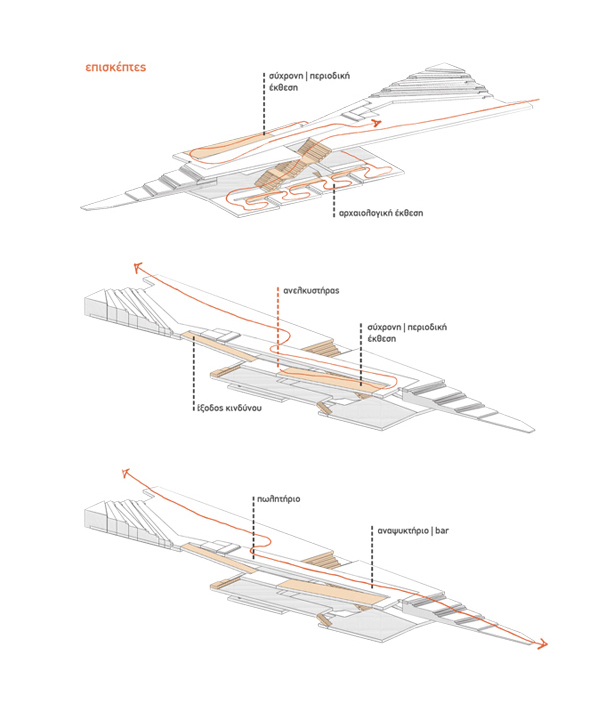
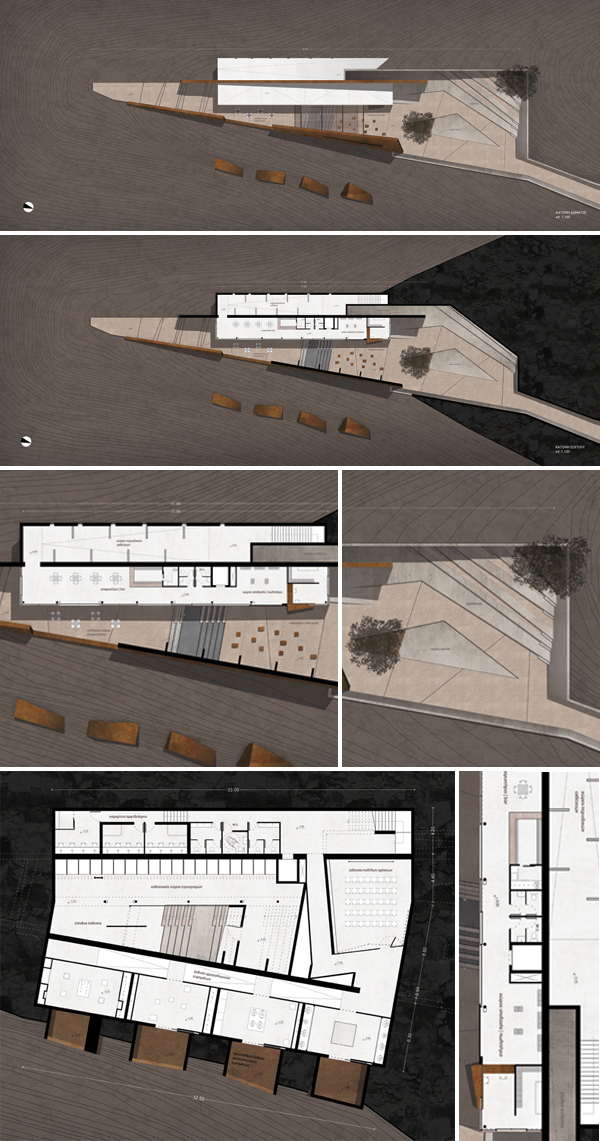
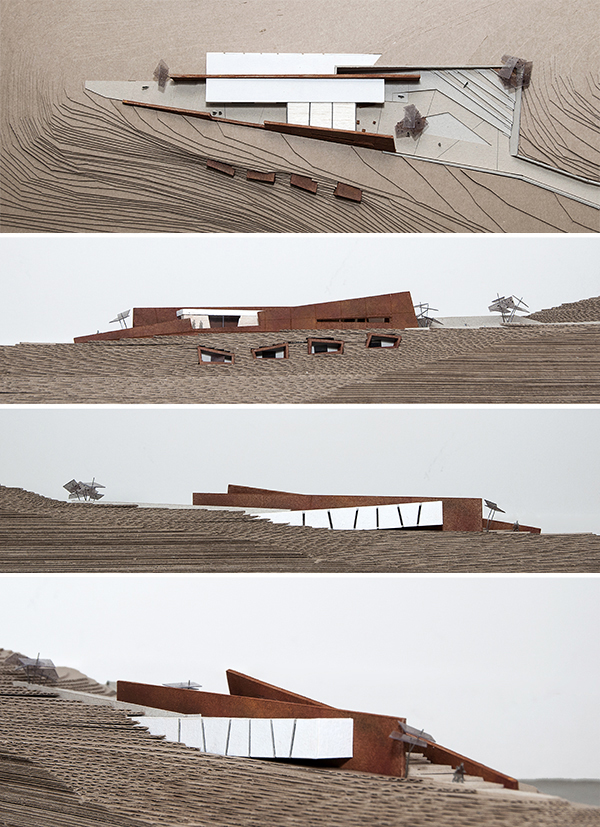
The main materials used are: concrete with metal shavings on the two main walls of the composition, in order to give the sense of corrosion, oxidation, and also to intergrate to Astypalea's red soil. White plaster on the building blocks for maintaining the aesthetics of the traditional settlement. In the landscape deisgn the levels are formed by zigzag lines, as a design metaphor of the natural curves of the ground, and stabilized soil is used to integrate to the natural ground. The main structure is made of concrete and metal beams and columns.
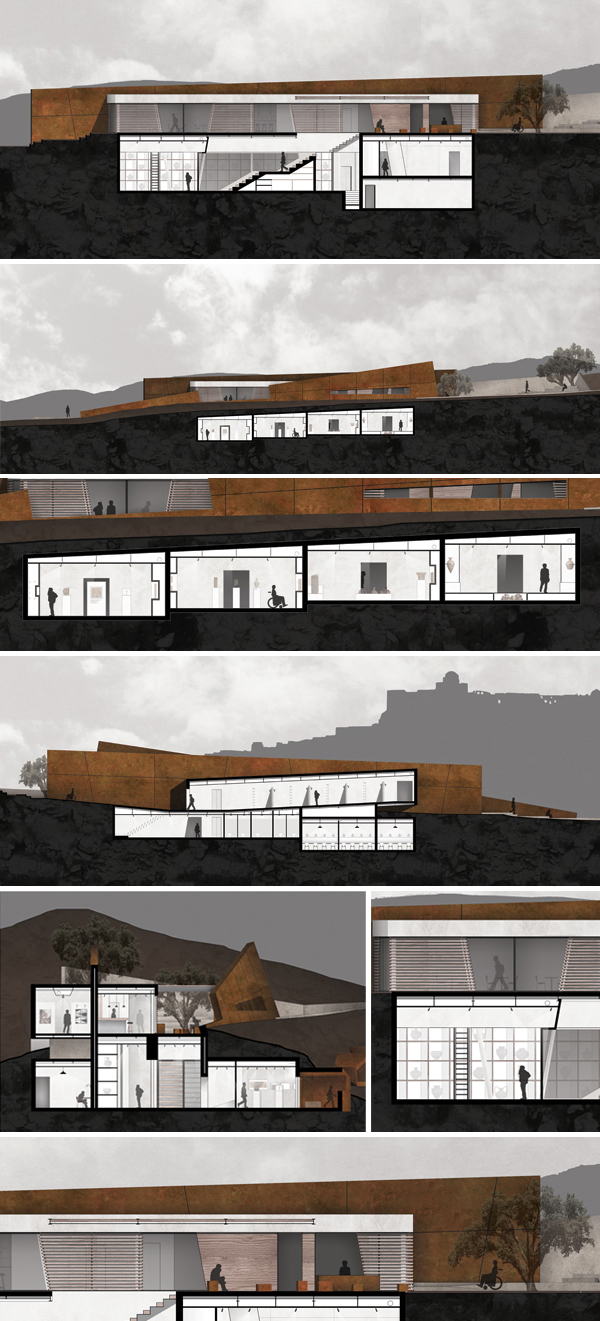
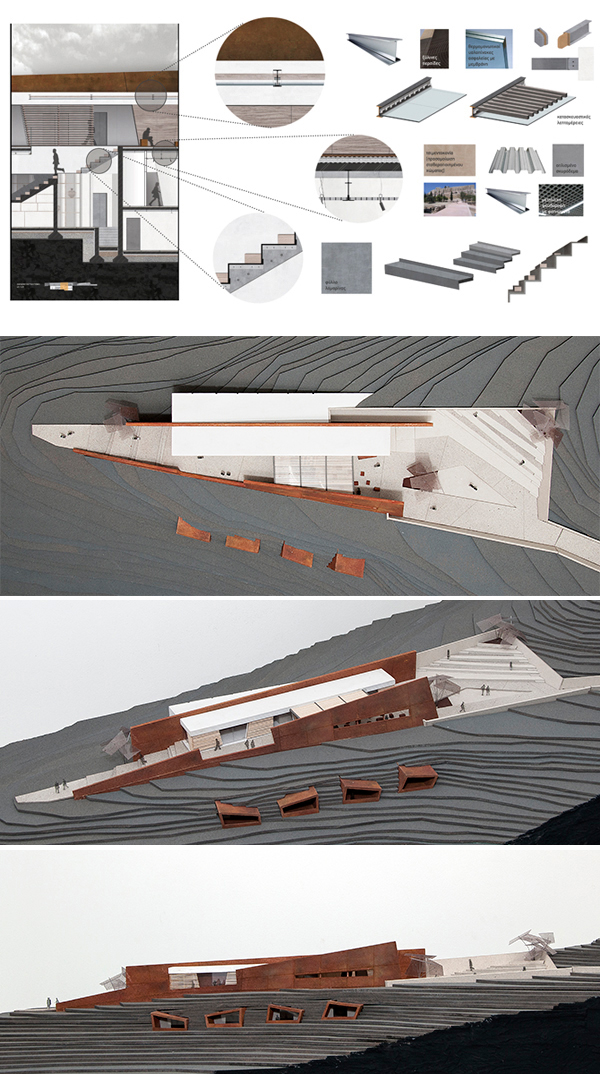
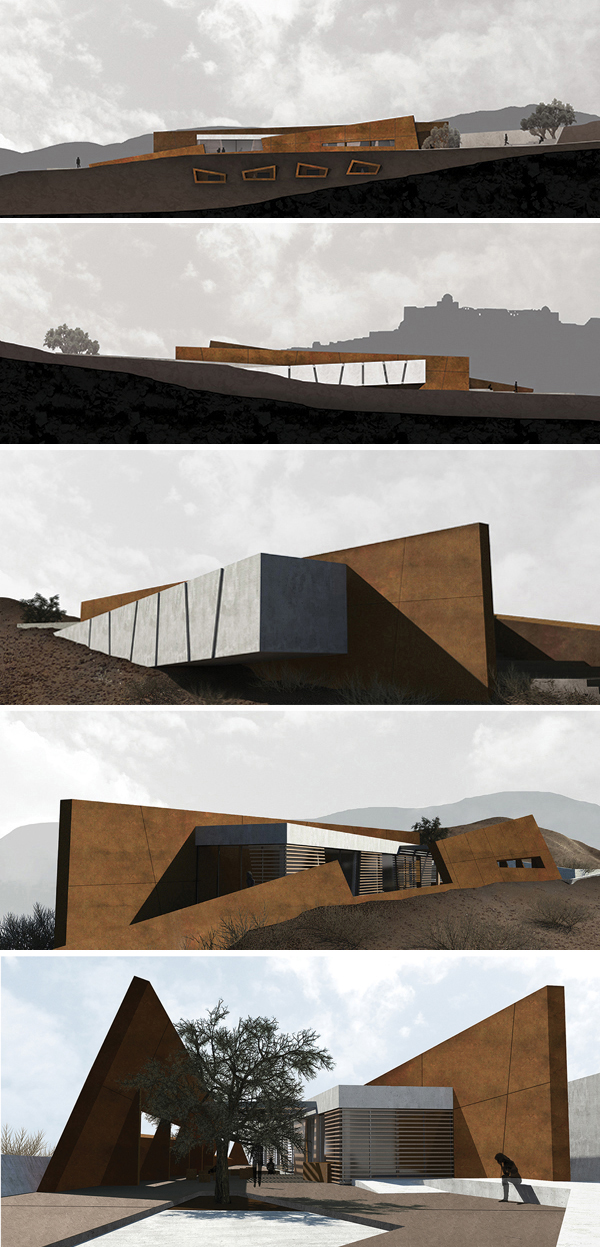
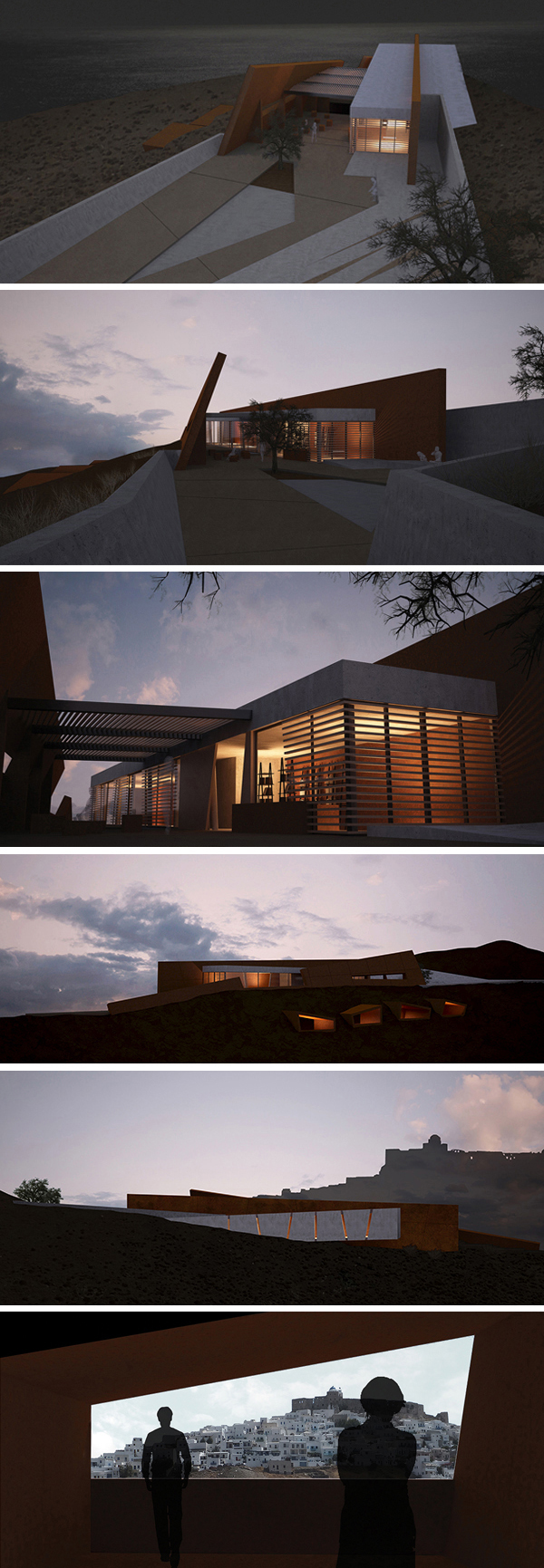
Related articles:
- DESTROY below the ACROPOLIS - VIDEO ( 13 November, 2007 )
- Architectural cannibalism in Athens ( 23 July, 2009 )
- The Acropolis Museum: An Unhappy Fit ( 08 June, 2010 )
- The New Acropolis Museum: A Triumph of Sophistry ( 21 September, 2009 )
- Αrchitectural competition ( 13 March, 2009 )
- D. Areopagitou 2008: reformation competition of the rear views of historic buildings towards the new Acropolis Museum ( 25 July, 2011 )
- New Acropolis museum ( 06 January, 2013 )
- All about fish ( 14 February, 2013 )
- New Acropolis Museum (NAM) ( 07 October, 2013 )
- The archaeological museum of Ancient Messene and the architectural configurations of the archaeological site ( 08 January, 2014 )
- Redefining Leftovers ( 05 April, 2014 )
- Theatre complex at Koukaki, Athens ( 20 January, 2014 )
- Reformation and rehabilitation of an inactive quarry, with spatial location of uses for Tourism, Recreation and Environmental Education ( 10 February, 2014 )
- Cultural center of Glyfada ( 23 February, 2014 )
- Environmental Center and Cultural Center in Kaiafa’s Lake ( 21 March, 2014 )
- The rack railway museum at Vouraikos gorge ( 18 April, 2014 )
- Museum of underwater antiquities in Chios ( 01 June, 2014 )
- Art multiplex in the Customs Office area in Palaia, Volos ( 24 February, 2015 )
- Diploma projects exhibition museum of school of architecture ( 02 March, 2015 )
- Lighthouse Museum in Andros ( 20 April, 2015 )
- Archaeological Museum for the Neighbourhood of Plato’s Academy ( 15 April, 2015 )
- Palazzo di Lorenzo’s Museum in Sicily ( 15 May, 2015 )
- New Archaeological Museum of Delos ( 19 July, 2015 )
- Archaeological Museum of Eleftherna ( 01 September, 2015 )










